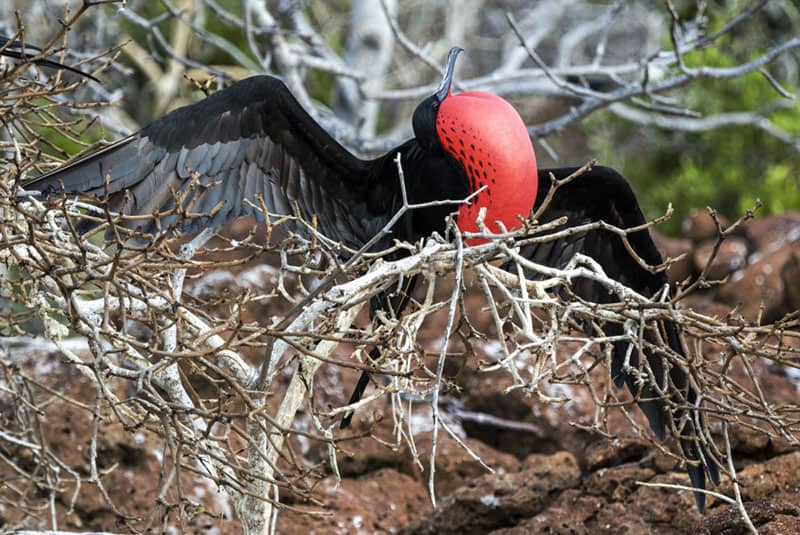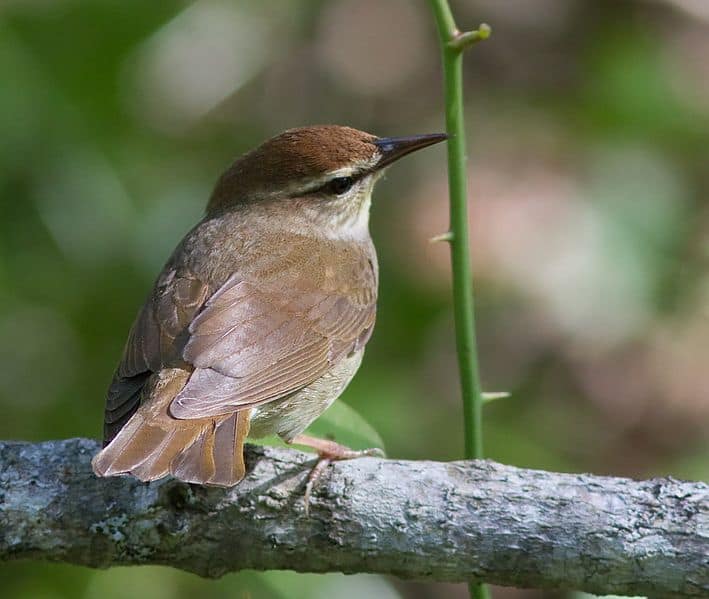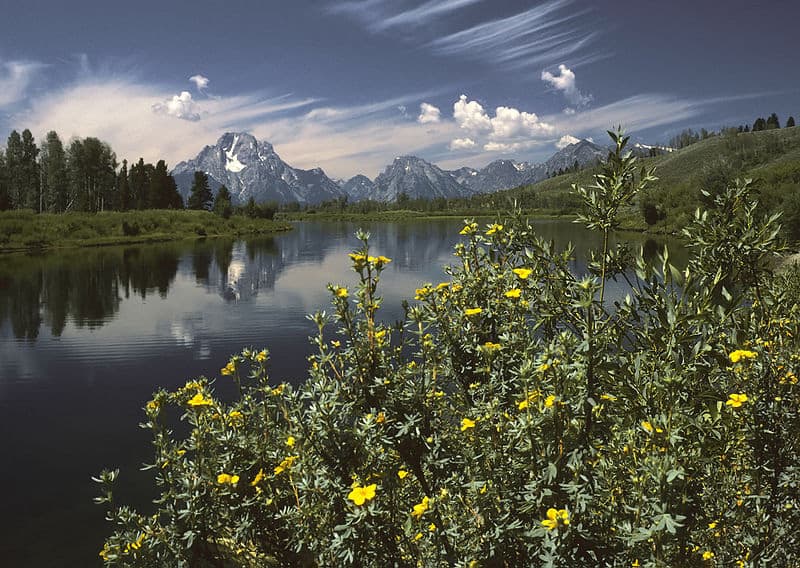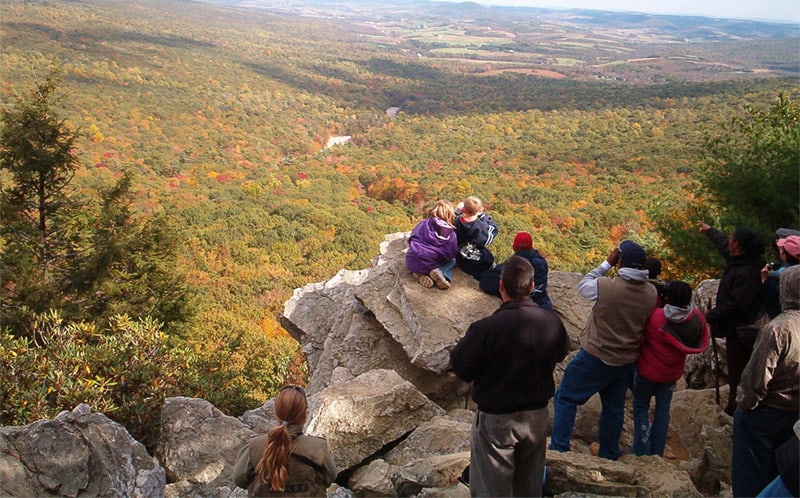A screech-owl calls through the darkness, as a large, dark bird flies up over the trees and into the glow of early morning: a chuck-wills-widow. Two species as soon as we get out of the truck is a great start for a Big Day.
My husband Walter and I are birding the Florida Keys—Key Largo to Key West in one day. The goal for a Big Day is to see as many species as possible in 24 hours. We have always tallied the species seen at the end of a day of birding, but this is the first time we’ve set out to break the Big Day record for Florida.
Each year the American Birding Association publishes its Big Day Report, which includes the top 10 records for each state and Canadian province, Big Day monthly records, and written reports submitted by competitors. Florida’s record high stands at 179 species seen on April 23, 1983. Florida’s top 10 records were all set in either April or May, when spring migration is in full swing.
It is now September, and the Florida ABA record is 140 species. So, if we’re super-lucky, we’ll break the annual record; if we’re just plain lucky we’ll top September’s. I’ve read the ABA rules, printed out all the appropriate forms, and daydreamed about reading my report in next year’s edition.
We chose the keys for this trip because it’s fall migration and there’s a good chance that birds are hanging out on the islands, fueling up for their southward flight over the Gulf of Mexico. If migrants are around, our numbers should be pretty high at the end of the day. Plus, the scenery along the drive to Key West is spectacular.
It is still dark when we enter the thick hammock of trees that make up Dagny Johnson Key Largo Hammock Botanical State Park (that’s a mouthful). We can tell by their calls that cardinals are starting to move around. We sit in the courtyard and wait for more light, listening for species to check off our list. In the recent past we’ve seen short-tailed hawks from this spot, so I frequently scan the brightening sky overhead.
The first warbler chirp from the canopy sounds like a prairie warbler, but we can’t make a positive identification. A blue-gray gnatcatcher whines from the trees behind us. After a long wait, we see movement along the forest edge bordering the road. An ovenbird is our first warbler of the day, strutting through the dried leaves, bobbing its tail as it advances.
A Big Day changes my perspective on bird watching. On a more typical outing, I would keep my binoculars on the ovenbird until it was out of sight, enjoying its antics as it moved along the forest edge. But, today, numbers are the goal, so I quickly forget the ovenbird and continue searching the trees, sky, and road.
White-crowned pigeons are the most numerous species at Dagny Johnson this morning. We see one after the other flying overhead and crashing through the trees to perch, but no hawks, no woodpeckers, and few warblers.
In order to finish our birding in Key West by dark, we prepared an itinerary for the day specifying the amount of time to spend at each spot. Our allotted time for Dagny Johnson has run out, and we have to move on to the next location. We leave with 12 species on our list, a number I am not particularly happy with. Twelve down, 129 left to break the record.
“Road watching” for birds in the keys can be quite productive. US-1, the only road to Key West, is a wide corridor bordered by forest. Immediately, we start seeing more species. Gray kingbirds and belted kingfishers perch on overhead wires. A red-bellied woodpecker flies to a telephone pole. Common mynas wander the parking lot at a convenience store.
We get our first view of the ocean as we cross the bridge over Snake Creek. The water, crystal clear in the early morning light, is patched with greens and blues. A low bank of clouds rests on the horizon. Just as we crest the bridge, two magnificent frigatebirds soar overhead and a brown pelican flies below us along the water.
The keys are a string of islands, upwards of 800, that run south to southwest from the lower tip of Florida. Bridged channels flow with the tide between the islands along US-1. As we cross the bridges to our next stop, we mark off laughing gulls, royal terns, and double-crested cormorants. All common species, but their presence is encouraging.
We arrive at Windley Key Fossil Reef Geological State Park at 8:15 a.m. This has to be the first time in my life that I’ve been to two state parks before nine in the morning. Windley Key is a great place to bird watch, usually. Numerous trails traverse the dense keys hammock that surrounds abandoned quarries. The quarries, which supplied rock to build the Florida East Coast Railway in the early 1900s, provide open space with a hammock backdrop-good habitat for spotting soaring hawks and birds that frequent the forest edge.
We wander slowly through the park, our binoculars ready, but don’t see many birds. A palm warbler, bobbing its tail as it moves along the ground, rewards our patience when we sit in a good spot and wait quietly. But nothing else moves for a long time. As we watch a golden-red land crab race to its hole in the sand, a merlin, flying along the treetops, catches our eye. At last, our first hawk of the day!
Once again, time is up and we leave Windley Key to continue south. In Islamorada, about halfway to Key West, four broad-winged hawks soar in circular formation over Bud and Mary’s Marina. An osprey, perched on one of the old abandoned bridges that parallel US-1, feeds on a fish.
We pull into the parking area at Anne’s Beach, a small, skinny park, sandwiched between the highway and the ocean, which has been a hotspot for birds in our past. A long boardwalk twists through tropical trees and along white, sandy beach-perfect habitat for shorebirds and warblers. Almost every time we have birded here in the past, we’ve seen a great blue heron and spotted sandpipers. A couple of weeks ago, I saw a prothonotary warbler. So I hope for a lot of species when we step onto the boardwalk.
Walter walks ahead, but I stand and stare into the trees where I previously saw the prothonotary. Nothing is moving, but I don’t give up. I watch. I wait. I wrestle with my desire to fidget. Again, my patience is rewarded when a prairie warbler pops into view. Then a parula. Then a yellow-throated warbler. Soon the trees are alive with birds. I call Walter back and we count four prairies and four parulas and continue to scan the trees.
“Chestnut-sided warbler,” Walter whispers.
I see it but would not have been able to identify it. It’s a female with no red on its flank. I’ve only seen full-colored males in the past and I’m not good at studying my bird books.
Time’s up at Anne’s Beach. In the truck, we total the species seen at this spot, including seven types of warblers-not bad for a tiny park. But no great blue herons are around, and we’ll have to look elsewhere for a spotted sandpiper. We hope the shorebirds are farther down the keys.
As we crest the Channel 5 Bridge-one of the highest in the keys-we see Long Key, our next stop, jutting out into the Atlantic Ocean. Over the years, we have had spectacular birding at Long Key State Park, especially during migration. But it’s late morning and the birds may be resting. It feels like 90 degrees outside and the nature trail will be steamy.
We stand on the wooden footbridge that crosses a tidally influenced creek, red mangrove trees forming a tunnel over our heads. Hoping for a clapper rail and expecting a green-backed heron, we once again see no birds. I lose my focus on birding and instead watch snappers below me swim in and out of the roots of the mangroves, unaffected by the strength of the outgoing tide. We watch for a spotted sandpiper in the roots of buttonwood trees that separate the trail from the beach. Periodic breaks in the trees let us see the beach, but still no shorebirds.
Walter walks ahead of me. I don’t like it when we separate because he is notorious for phenomenal sightings when I am not around. But I’m trying to go slowly and wait for things today, not wanting to scare away the few birds that are here.
My patience isn’t productive, so I step up my pace. I have to catch up with my husband to hear what I missed. Suddenly, a warbler jumps up from the forest floor just inside the trail’s edge and lands on a low tree branch. Its large size and tan belly make me think worm-eating warbler, but leaves hide its head. I focus my binoculars on it while it jerks and wiggles on the branch, obviously upset by my presence.
Right before it flies farther into the forest, I see the rusty stripe along the top of its head-a Swainson’s warbler. This species is a nemesis for Walter and me. I’ve only seen one before in my life, on this same trail years ago. Walter’s never seen one. At home, we monitor Audubon’s message board for sightings of Swainson’s in migration. The next day, we go to the place they were seen, searching the forest floor where they feed from leaf litter, but we never get lucky.
My heart beats hard as I look for Walter. I’m not into one-upping, so I feel pretty bad that he wasn’t with me. I find him sitting in the sand underneath a bank of mangrove trees picking miniature shells from the ground. All he saw were a couple of skipper moths flitting along the ground. I guess it was my turn for the phenomenal sighting.
We hurry back to the car to keep on schedule. A few species were added to our Big Day list at Long Key, including a sharp-shinned hawk perched on a snag, but still only one shorebird. We thought we’d at least see a spotted sandpiper.
“We don’t even have a great blue heron yet,” Walter says as we drive to Curry Hammock State Park. A great egret stood at the base of the last bridge we crossed, but many common species continued to elude us.
Hawkwatch is underway when we arrive at Curry Hammock. Each year from September 15 to November 7, two people spend the daylight hours on the porch outside the elevated bathroom at the park. All day long they watch the skies and count hawks and other raptors.
Curry Hammock is one of numerous sites in the United States where raptors are counted in an attempt to monitor their health. Southward-moving hawks in the fall cruise up and down the keys waiting for good conditions to cross the water on their way to their wintering grounds in southern Mexico and South America. Curry Hammock is in one of the thinner stretches of the Florida Keys, which channels the cruising hawks into a tighter area, making them easier to see and count.
We check the sightings board, which lists season and previous-day totals, to see what hawks flew by this park. Yesterday the hawkwatchers saw 401 broad-wings (we have seen 4), 1,011 sharp-shinneds (us, 1), and 198 American kestrels (zippo for Walt and Sue).
Before we leave, the watchers confirm that Thursday was “the day.” They were completely rained out Monday, Tuesday, and Wednesday. Then when the skies dried out on Thursday, birds were everywhere.
Feeling downright unlucky, we at least add some shorebirds to our Big Day list, including a Wilson’s plover, a special treat that helps lift our blues a bit.
Just beyond the City of Marathon is the Seven Mile Bridge. Usually, I get great pleasure from this bridge-sea turtles surfacing and porpoises jumping are common-but today I scour over our list to identify the species we have yet to see. My, how a Big Day can change one’s focus.
Although we left it off our itinerary, we opt for a quick drive through Bahia Honda State Park. We still need some shorebirds, and the park road follows a long strip of beach.
Ca-ching! A reddish egret dances the outgoing tide for food. It hops, twists, flaps, and finally jabs its bill into the water after fish. We sit on a tiny bridge over the creek, this egret’s dinner table, and enjoy the performance.
We also add a black-bellied plover to our Big Day list, but two new species is all we get at Bahia Honda. Still no great blues or spotted sandpipers, and it’s time to continue south.
As we approach Key West, deep purple rain clouds hang low over the island. Getting rained out is not the way I want to finish our Big Day. But Florida rainstorms can move through quickly-rainy and gray one minute, sunny and clear the next.
We drive past our favorite Key West haunts and head straight for Fort Zachary Taylor Historic State Park, Florida’s southernmost park. The centerpiece is Fort Zachary Taylor, which was built in the mid-1800s to protect the southern coastline of the United States.
In addition to history, the park has great habitat for migrating birds. As soon as we enter the park, two American kestrels hover over an open grassy area, hunting for dinner. A peregrine falcon takes an unsuccessful dive for the kestrels and then perches in a snag waiting for its next opportunity.
Sprinkles come and go, but we don’t mind because they’re keeping the birds on the island. A Wilson’s warbler is our reward for a quiet sit in a wooded area. Perched on a cornerstone of the fort, a green-backed heron stabs at fish in the moat. We hear a distinctive buzz and, after a long hunt, track down an indigo bunting sitting at the top of a tree.
Immediately after the reddish-orange sun disappears behind a clouded horizon, a torrential downpour covers the park. We sit in the truck to wait it out while working on our Big Day numbers. We total 53 species for the day. It’s horribly unimpressive; we didn’t even get half of the state record.
At dark, with the rain still falling, we leave the park.
When the skies finally dry out, we find a beachside tiki hut. We discuss the day and our numbers over blackened mahi mahi and mango smoothies.
“We didn’t even see a great blue heron,” Walter says.
“What about a spotted sandpiper?” I ask.
As we walk down Duval Street for a beer at the Hogsbreath Saloon, I consider the different frames of reference for birding. A Big Day changes everything. If I hadn’t been so worried about the numbers, I would have considered this to be a fabulous day. But, since the species total was the goal, it wasn’t a particularly successful trip. We missed a fallout of birds by two days. I need to retire so I can bird when I want to!
* * *
Upon waking the next morning, I walk out to the hotel’s pier for some fresh Gulf of Mexico air. At the base of the pier, standing in the sand almost within my reach, is a great blue heron.
“Where were you yesterday?” I ask. Two people sitting in beach chairs give me strange looks as I talk to the heron.
I move to the other side of the pier and see a spotted sandpiper, another species missing from our Big Day list, bobbing its tail as it walks along tree roots at the water’s edge. Too bad I can’t add them to yesterday’s Big Day list.
Hey! Is there such a thing as a Big Weekend?




